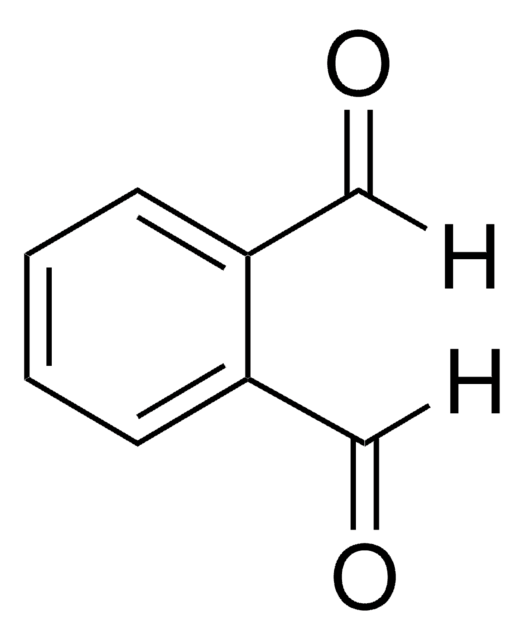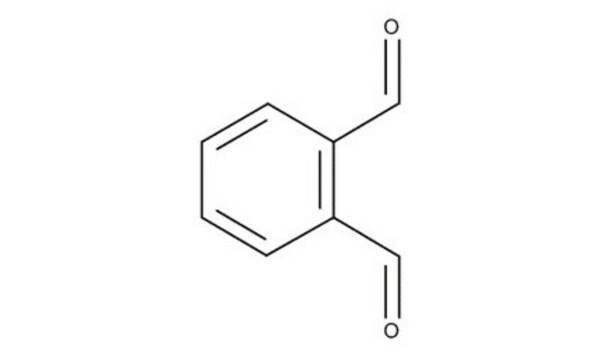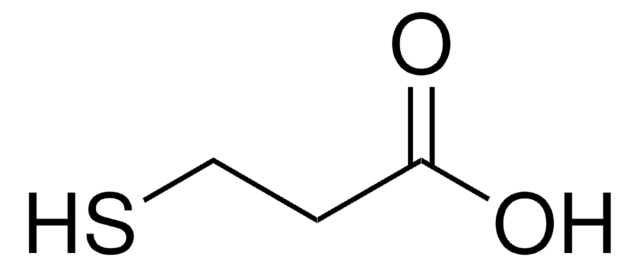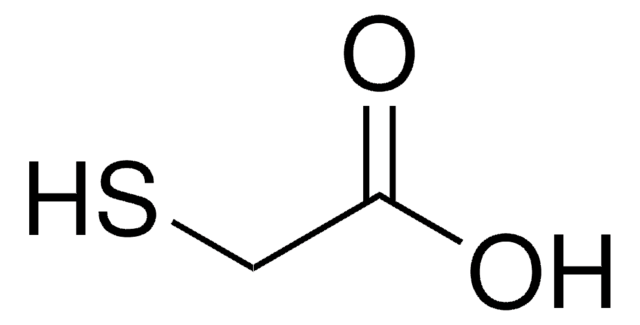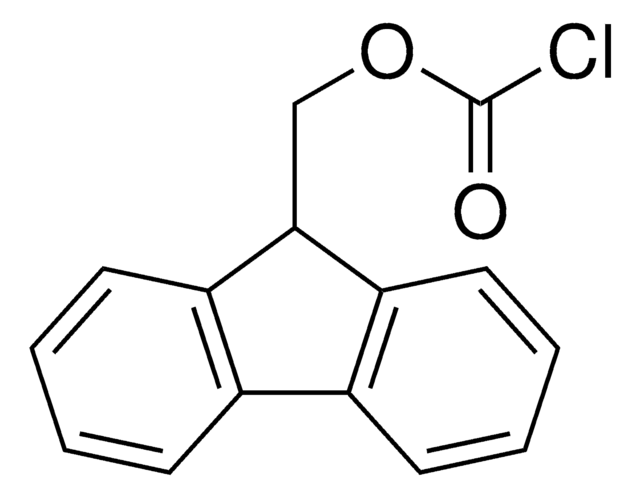79760
Ftaldialdehído
for fluorescence, ≥99.0% (HPLC)
Sinónimos:
Dicarboxaldehído o-ftálico, o-Ftalaldehído, Benceno-1,2-dicarboxaldehído, OPA
About This Item
Productos recomendados
grado
for fluorescence
Ensayo
≥99.0% (HPLC)
Formulario
solid
impurezas
≤0.5% phthalic acid
mp
54-56 °C
fluorescencia
λex 334 nm; λem 455 nm (Thiol Adduct)
λex 340 nm; λem 450 nm in reaction buffer (with glycine)
idoneidad
suitable for fluorescence
temp. de almacenamiento
2-8°C
cadena SMILES
O=Cc1ccccc1C=O
InChI
1S/C8H6O2/c9-5-7-3-1-2-4-8(7)6-10/h1-6H
Clave InChI
ZWLUXSQADUDCSB-UHFFFAOYSA-N
¿Está buscando productos similares? Visita Guía de comparación de productos
Descripción general
Aplicación
Acciones bioquímicas o fisiológicas
Palabra de señalización
Danger
Frases de peligro
Consejos de prudencia
Clasificaciones de peligro
Acute Tox. 3 Oral - Aquatic Acute 1 - Aquatic Chronic 1 - Eye Dam. 1 - Skin Corr. 1B - Skin Sens. 1 - STOT SE 3
Órganos de actuación
Respiratory system
Código de clase de almacenamiento
6.1A - Combustible acute toxic Cat. 1 and 2 / very toxic hazardous materials
Clase de riesgo para el agua (WGK)
WGK 3
Punto de inflamabilidad (°F)
269.6 °F - closed cup
Punto de inflamabilidad (°C)
132 °C - closed cup
Equipo de protección personal
Faceshields, Gloves, Goggles, type ABEK (EN14387) respirator filter
Elija entre una de las versiones más recientes:
¿Ya tiene este producto?
Encuentre la documentación para los productos que ha comprado recientemente en la Biblioteca de documentos.
Los clientes también vieron
Nuestro equipo de científicos tiene experiencia en todas las áreas de investigación: Ciencias de la vida, Ciencia de los materiales, Síntesis química, Cromatografía, Analítica y muchas otras.
Póngase en contacto con el Servicio técnico